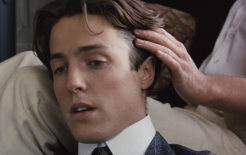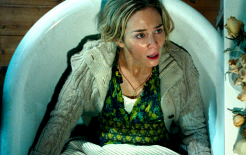
South African farmers: we will decide
Australia, refugees and the politics of fear
Culture
Books
The Story of Shit
We owe our excrement more respect than we normally show. What we toss out is not worthless rubbish but a valuable product of intricate, highly synchronised processes. Not only is shit the keystone of the circle of life, but it’s also an object of lust, a means of creative expression, and a vehicle for communicating love between humans or between man and animal. Shit is the universal lubricant of the entire life mechanism; shit keeps the whole thing going. One of the first to recognise this was the philosopher Diogenes (c. 412–323 BCE). The list of things he had respect for was very short indeed. He regarded nice clothing, good manners and grand banquets as futile attempts to distinguish ourselves from the animals. Shit, on the other hand, was something he could pay deference to. To underscore this, he hiked up his robe in the middle of the marked square and defecated the natural way. Respectable people have never been able to understand this, any more than they understood Gustave Courbet, famous for his painting L’origine du monde with its glimpse inside a beautiful nude woman as seen from below. When asked what he thought of a neatly painted little landscape by François-Louis Français, Courbet expressed his disapproval with the words “There’s nowhere to shit in it!” Don’t go where you can’t shit. Heinrich Heine once told an anecdote about the same high regard for excrement. While waiting for an appointment with a member of the Rothschild family, he saw a servant walk past who was carrying an elaborately decorated silver chamber pot, obviously belonging to his master. A young man who happened to be waiting with Heine tipped his hat in respect. That young man will go far, Heine said to himself.
So it would seem fitting to welcome your own faeces into the world with a certain amount of ceremony. Fortunately nearly everyone has the requisite setting for the family loo: a porcelain baptismal font, gleaming white and ready for the new citizen of the world. It may even give rise to an aura of serenity, most successfully achieved by the classic Japanese toilet and lyrically described by Jun’ichiro Tanizaki (1886–1965) in In Praise of Shadows as “a place of spiritual repose”. “No words can describe that sensation as one sits in the dim light, basking in the faint glow reflected from the shoji, lost in meditation or gazing out at the garden. Here, I suspect, is where haiku poets over the ages have come by a great many of their ideas.” But you don’t have to be a haiku poet to unwind on the loo, staring into the distance and plunging into your own fantasies or those in a book. A toilet is a reader’s throne. “I’ve done all my best reading on the toilet,” Henry Miller confessed. For Marcel Proust, the little room “intended for a more specific and vulgar use” was a place for “all my activities that demanded inviolable solitude: reading, daydreaming, weeping, and sensual pleasure”.
Whenever I went to the library as a boy to borrow new books, I would look into the reading room with astonishment. Why would you sit in a room with other people and read when you could do it at home alone in the loo? Didn’t these people have indoor plumbing? In a room like that your body has nothing to do; on a toilet your mind and body are concentrating together. It’s not for nothing that the faces of people who are pooing look so much like those of people who are thinking. Squeezing out a brilliant idea requires the same effort as squeezing out a hard turd; you see the veins in the forehead swelling in order to transport extra blood. Actually, the pose of Rodin’s The Thinker is no different from that of an equally concentrated Pooer.
Even a brief visit demands some decorum, all the more because there was so little time to get acquainted. Your faeces vanish from your life almost as soon as you give birth to them, on their way to an uncertain future. This can be a traumatic experience, especially for children. The six-year-old daughter of a Chicago psychiatrist became completely overwrought because each time a little piece of herself disappeared into the dark hole of the toilet. She could only be comforted by her father reassuring her that the little bit of human being went to be united with its ancestors in some cesspool paradise where everyone’s excrement would live happily ever after.
Nothing for it but to say goodbye, something even grown-ups aren’t very good at. When you’ve had a good visit with someone you look forward to leaving because you can always come back again, but the more unenjoyable the visit is the more difficult that becomes. Many couples stay together simply because neither one of them knows how to let go. The advantage of being a turd is that you barely have time to become attached before the moment of separation arrives. But when it does, we’re forced once again to face the unbearable fact of life’s brevity. Man is but a fart in the endlessness of eternity, but what a stinker he is! All that’s left of us after our departure is a puff of smoke – all the more reason to pause and give some thought to the passing of a creature even more perishable than ourselves: our very own turd child.
“See you later,” you murmur, but you don’t really mean it. “Take care now,” and you pull the chain.
This is an edited extract from The Story of Shit by Midas Dekkers (Text Publishing), available now.
Midas Dekkers is a bestselling Dutch writer and biologist. His books include Physical Exercise, The Way of All Flesh, Dearest Pet and The Larva.

South African farmers: we will decide
Australia, refugees and the politics of fear
‘The Americans’, the Russians and the perils of parallels
Why sometimes it’s better to approach art on its own terms
Merchant Ivory connects gilded surfaces with emotional depth
Restraint belies profundity in ‘Maurice’, ‘Howards End’ and more
‘A Quiet Place’, where silence means survival
John Krasinski’s latest film summons terror from the everyday
Comments